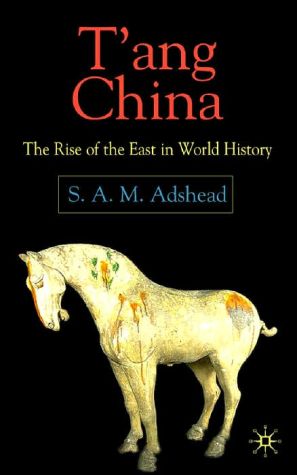

 |

|

The average rating for T'Ang China The Rise of the East in World History based on 2 reviews is 3.5 stars.
Review # 1 was written on 2014-04-15 00:00:00 Don Dillon Don DillonAstonishingly comprehensive for such a short book, though I'm not in a position to evaluate how accurate it is. Has theoretical ambitions but ends up being mostly descriptive. Elevated prose style which you may find delightful and/or annoying according to taste. Probably won't blow your mind but definitely worth reading if you're into comparative macrohistory. |
Review # 2 was written on 2017-04-12 00:00:00 Mark Emory Mark EmoryThis book by Carter Vaughn Findley of Ohio State University (whose Wikipedia page is in Turkish), traces the movement of the Turkic and Turkish peoples through history from the earliest records of steppe nomads on the margins of ancient empires (the Scythians for the Romans, the Xiongnu for the Chinese) to the contemporary Turkish republic which inhabits Anatolia and Thrace, and Turkic post-Soviet central Asia and Xinjiang. He sees all of these folk as a loose cultural and linguistic unit, but with the important caveat that it is impossible to fix this to any one particular “ethnic” group, certainly at least in terms of genetics. The appealing metaphor he uses at the beginning is that of a caravan rolling gradually across Asia from Mongolia to Istanbul, picking up and dropping people and baggage as it goes, so that by the time it reaches its destination it is both the same vehicle that started out and yet a different phenomenon altogether. The other metaphor that threads its way through the book is that of the weaving of a Turkish carpet, so that all the shifting developments that have occurred in the Turkic/Turkish space – most significantly the conversion to Islam, and the encounter with modernity (whether in its European or Soviet forms) which characterized the 19th and 20th century Turkish/Turkic experience – are seen as strands woven into the fabric of its history by those who have created them. One dynamic that stands out is the author’s contention that historically it has been possible, even (in conditions of diffuse power) inevitable for states to be formed on the steppes, but that they have not been able to last unless they took over an Empire (the Mongols became the Yuan Dynasty, the Ottoman conquest of Byzantium) and then became sedentary themselves; otherwise the centrifugal forces were bound to overwhelm the centripetal ones. Another is the change that came with gunpowder and industry: now the steppes themselves can be pinned down by the great empires. There is plenty of dense academic analysis here, but it is Findley’s propensity for weaving metaphor in and out of the text that lifts the book into a higher class, where the provision of detailed information merges with the sympathetic human search for meaning in history and the quest to create a liberating space where once nomadic peoples can live in an age where there are no more open spaces to roam. |
CAN'T FIND WHAT YOU'RE LOOKING FOR? CLICK HERE!!!